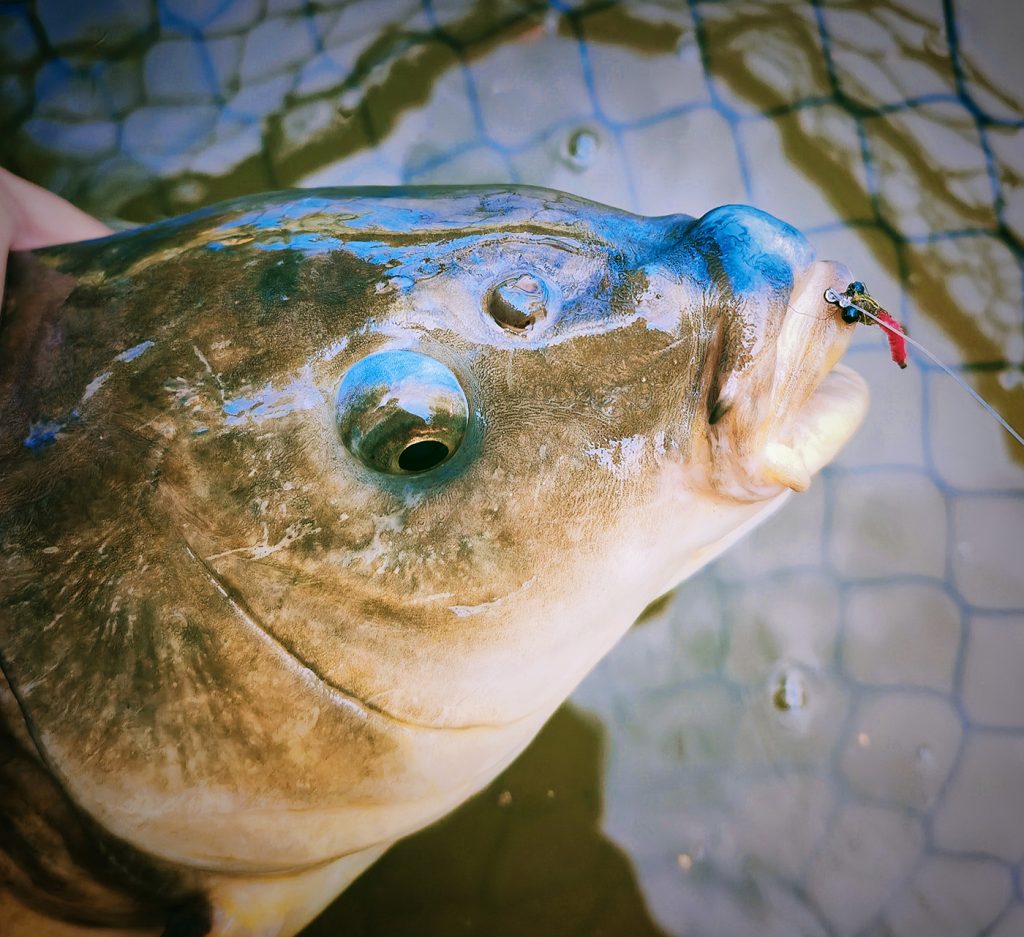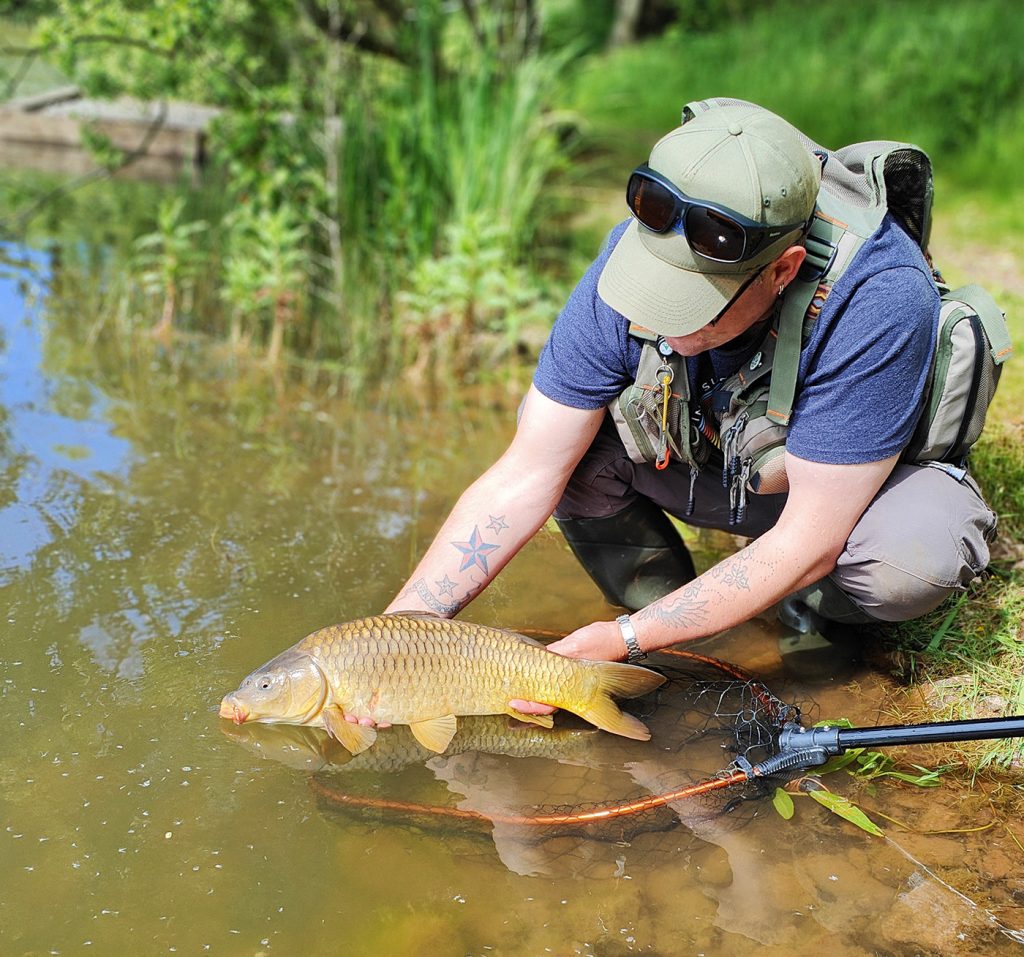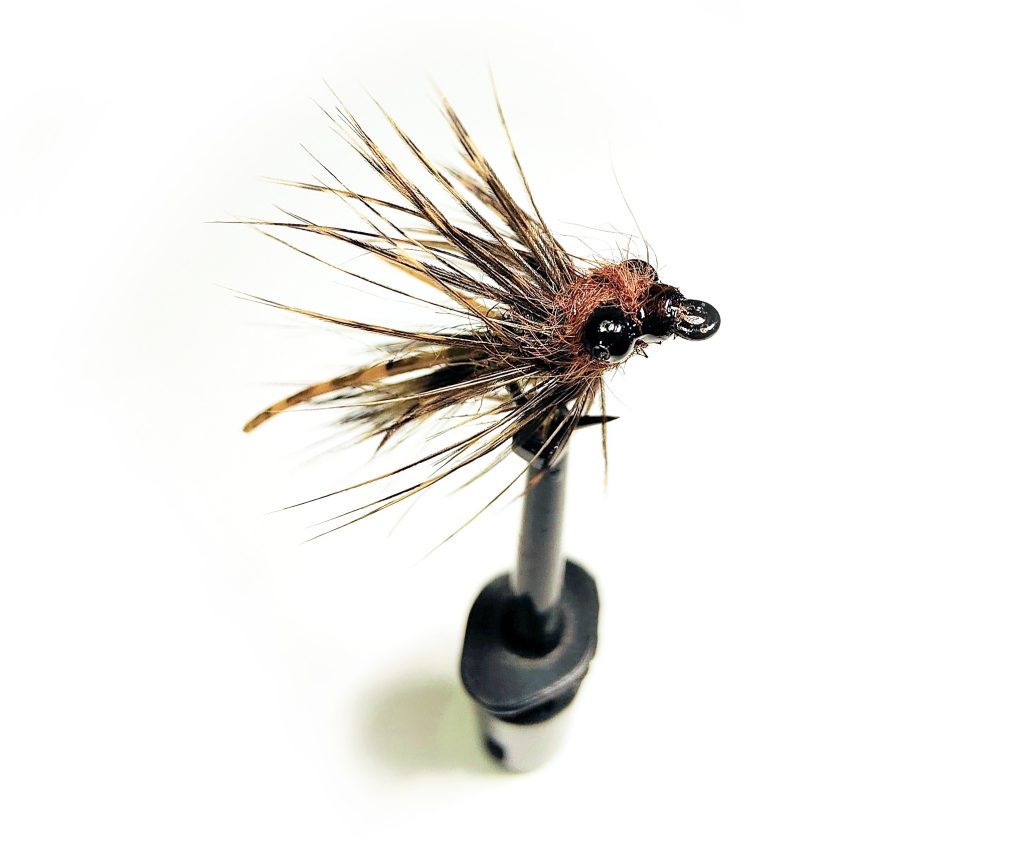
The variety in fly fishing is enormous, and almost all species of fish can be trigged in one way or another with a fly fished on a fly rod. The traditional trout and salmon fishing are familiar to everyone, but out there beneath the surface a lot of other exciting species await – and they also like to take an enticing fly. This week we talked to the English fly tyer and fly fisherman Jamie Sandford about one of his newer favourite fish, the “bonefish of fresh water” – the carp.
Here Jamie himself tells about the exciting fishing for the carp.

Many of you will know of the species carp. Now, take away any preconceived notions that these fish are just a “boilie eating pet” with a nickname and think about them feeding and preying on all manner of food items; from fry to chironomids, terrestrials and nymphs.
Let me show you the nymphs I tie and explain the presentation used to target carp via the “Drag & Drop” technique!
This somewhat niche method of fly presentation has been championed and written about by American and European fly anglers for many years. Anglers such as Barry Reynolds, Dan Frasier and Jose Rodrigues to name but a few were the ones I first watched and read about. It was through watching, reading and ultimately fishing with one of these aforementioned anglers that I too learnt about the “drag and drop” technique. In time I honed this technique to suit my own fishing here in the UK; on my local fishery and at various lakes in Portugal.

The Technique
The technique is best suited to shallow, clear water where the carp can be seen with ease tailing and/or patrolling whilst stopping periodically to feed. The key to success with the technique like most fishing situations is stealth and accuracy.
Tactics
Target your chosen fish and cast your fly (weighted nymph) ahead of the fish and drag the nymph across the waters surface before allowing it to drop in front of the fishes mouth. The optimum distance to drop the nymph is 6-12 inches away. If the nymph drops with a sloppy splash due to a poor turn over then you may spook the fish. If the fish hasn’t seen the nymph then reset by removing it and recasting.
Trusting you’ve made that perfect cast you must now pay attention to the fishes attitude. Most accurate drag and drops are met with an almost instantaneous take as the carp has actively witnessed the nymph drop in front of it. If the fish has failed to see the nymph, due to weed or silt plumes from feeding for example, then some short 2” strips can be enough to instil a take as the carp sees the nymph moving along the bottom.
The take/what am I looking for ?
An often tell tale sign of a take prior to a solid strip-set is the back end/tail-wrist stiffening with a rigid like flick as the nymph is sucked in. You have to see it to believe it, but once you understand the body language of the carp these movements are noticeable with every take!
STRIP-SET: It can often pay to pull into the fish first as you think your’re receiving a take. If you feel tension, set the hook by striking, but if you feel no tension immediately, stop and give the fish more time to take the nymph whilst not spooking it.

The gear
As you can imagine from reading this piece, accuracy is key and a poor cast will see fish spook and bolt from the area. Most 9’6” 7-8wt’s are more than ample A) for accurate casts B) playing big powerful carp.
A quality fly line that you are comfortable using at short range is paramount to presentation. As is a good fluorocarbon tippet to aid fly turn over. Modern day tippets mean you can use higher breaking strains with ultra low diameters. My go to choice is anything from 10-20lb depending on the environment (snags/weed) and the size of fish I’m likely to encounter. It’s worth noting that fishery/club rules are to be adhered to and followed with regards to net size, unhooking mats and equipment.

Flies/Nymphs
The weight of the nymph is as crucial as its colour. For most situations a nymph weighted solely by the hook and bead chain eyes (2.4mm) are ample weight to allow the nymph to sink when “dragged and dropped”. Ahrex Wet Fly FW580 in size 12 is a fantastic pattern, however weight can be varied when tying, to suit one’s water depth.
Colours can be experimented with and changed to suit. However my go to recommendations would be black, brown/olive, chartreuse or pink. Black would be my number one choice due to its suggestive silhouette and perhaps the simple fact its very easy to see in the water!
Tight lines out there – Jamie Sandford

